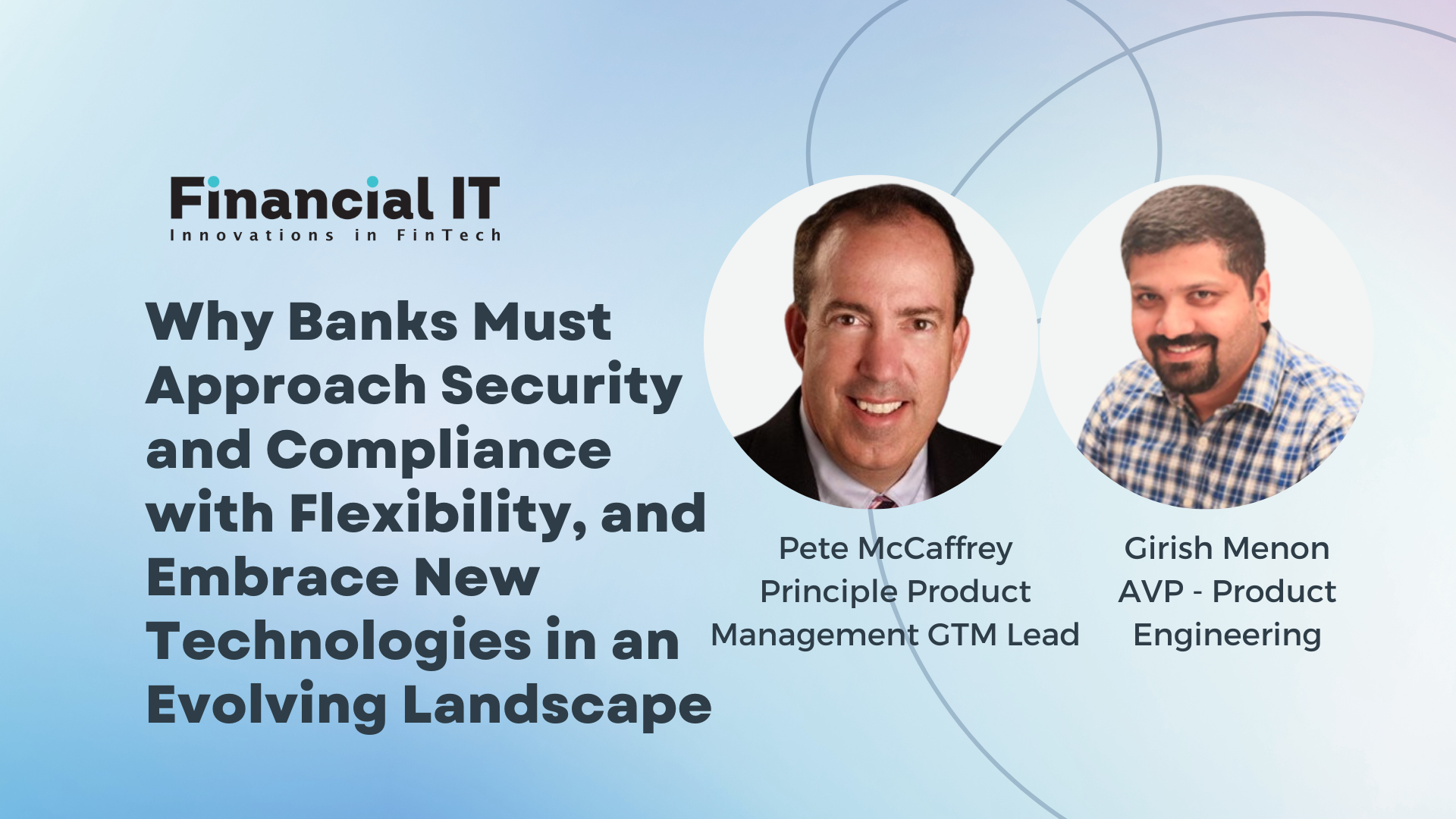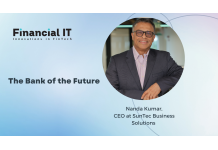Why Banks Must Approach Security and Compliance with Flexibility, and Embrace New Technologies in an Evolving Landscape

- Pete McCaffrey and Girish Menon, Principle Product Management GTM Lead and AVP - Product Engineering at IBM and SunTec Business Solutions
- 05.06.2023 02:30 pm #banking
The modernization of banks has been a central challenge for the global financial sector over recent years, and right now banks are in a transitional phase. The wave of global digital transformation happening across all industries is also taking place in banking, specifically in terms of the continued reliance on mainframe and core banking systems and the need for banks to innovate.
Global tech providers are working with their banking clients to find the best way to modernize these systems for security, responsiveness to customers, and support requirements for larger transaction volumes. Core banking mainframe systems are often associated with large scale transaction capabilities, handling thousands of transactions and supporting thousands of users concurrently, while managing terabytes of information and high bandwidth communication. Much of what is driving digital transformation is about the non-functional requirements around scale, performance and security, and the bar keeps changing. A responsive and data-driven core can deliver insight-driven customer engagement, unified relationship views to support decision-making, and superior customer experience across channels and more.
Why a hybrid model could be the best solution
AI is becoming increasingly important for leveraging the exciting new ecosystem. Breakthrough solutions from fintech providers are allowing tech providers to encapsulate and add value to existing core banking mainframe environments such as streaming architecture, AI capabilities, and polyglot persistence (which is essentially the use of different data storage approaches and technologies to support distinctive storage requirements).
The rapid evolution of the internet-based and related technologies has facilitated the shift from “branch banking” to “anytime, anywhere banking.” Banks have freed customers from being tied to a specific branch or channel, by enabling omni-channel access. Customer experience at branches has improved through better “self-service” capabilities (e.g., smarter ATMs, kiosks to print RFID-enabled passbooks, cash deposit machines etc.). Chatbots, smarter IVR, mobile apps, and more have given customers the flexibility to interact and transact conveniently and securely through multiple channels. But superior omni-channel customer experience driven by front-end solutions is no longer enough. Banks must be able to not only respond to customer needs but also proactively anticipate customer needs by mining historical data and combining it with real-time analysis of their behaviors, including transaction data, browsing patterns, interactions with chatbots, conversations with relationship managers or enquiries at a bank branch, and external data such as e-commerce shopping patterns.
Inevitably, this will mean that the best way forward architecturally is to take a hybrid approach and combine mainframes with public clouds. These together will allow for batch processing, which is largely used in banking today for settlement purposes.
The hybrid model also allows for analytics to be updated either over several hours or within seconds, which leaves banks better placed to address the range of business requirements they are facing. This model will be faster, lower cost, and less risky than attempting to rewrite core banking systems in their entirety and then migrating them elsewhere. It allows bankers to evaluate the best place to run the workload and for secure transaction processing workloads, the mainframe is invaluable.
Customer-centricity should motivate banks to embrace new technologies
Customer expectations and experiences are shifting. Investments will continue to bring new innovations to market to address new requirements and analytics will lead to timely and targeted marketing and sales communications in the form of personalized solutions and offers. Such capabilities are available to banks across their touchpoints with customers including digital channels, physical branches, and call centers. By using these available innovations, every customer interaction can be converted into an insight-based marketing or sales conversation and feedback can then be fed into the growing body of information about the customer.
Current banking systems can force a substantial time lag between when customers make an enquiry or complete a transaction and when the bank’s front-end systems get access to updated data. Not having access to customer data updated in real time limits the ability of an institution to get a unified view of their customers. It also reduces their agility to respond, for example, in sending out personalized offers, bundles or prices. Such shackles impede a bank’s ability to compete.
Banks burdened by the “technical debt” of their technology systems need to acquire the requisite capabilities, such as an agile and intelligent middle layer over the core system to deliver greater agility, innovation, and customer-centricity. Creating a new agile digital core will allow banks to match, outpace and differentiate themselves from their competitors’ offering. In turn, this will help attract new customers, and strengthen relationships with existing ones, to capture greater wallet shares, and drive profitable revenue growth.
Banking systems must quickly adapt to the new world with all the regulatory obligations that have been put in place, and it is vital for banks to acquire the digital capabilities they need to remain relevant and customer-centric for the years ahead. A new and agile core will be the engine for driving product innovation and superior customer experience.
Putting the emphasis and importance on integration and interoperability is really the best way to support, address, and even embrace industry standards. That is what opens platforms up for the ecosystem of software providers such as SunTec.
























